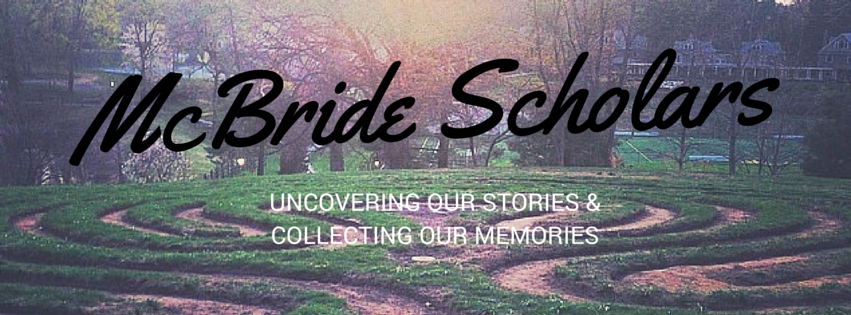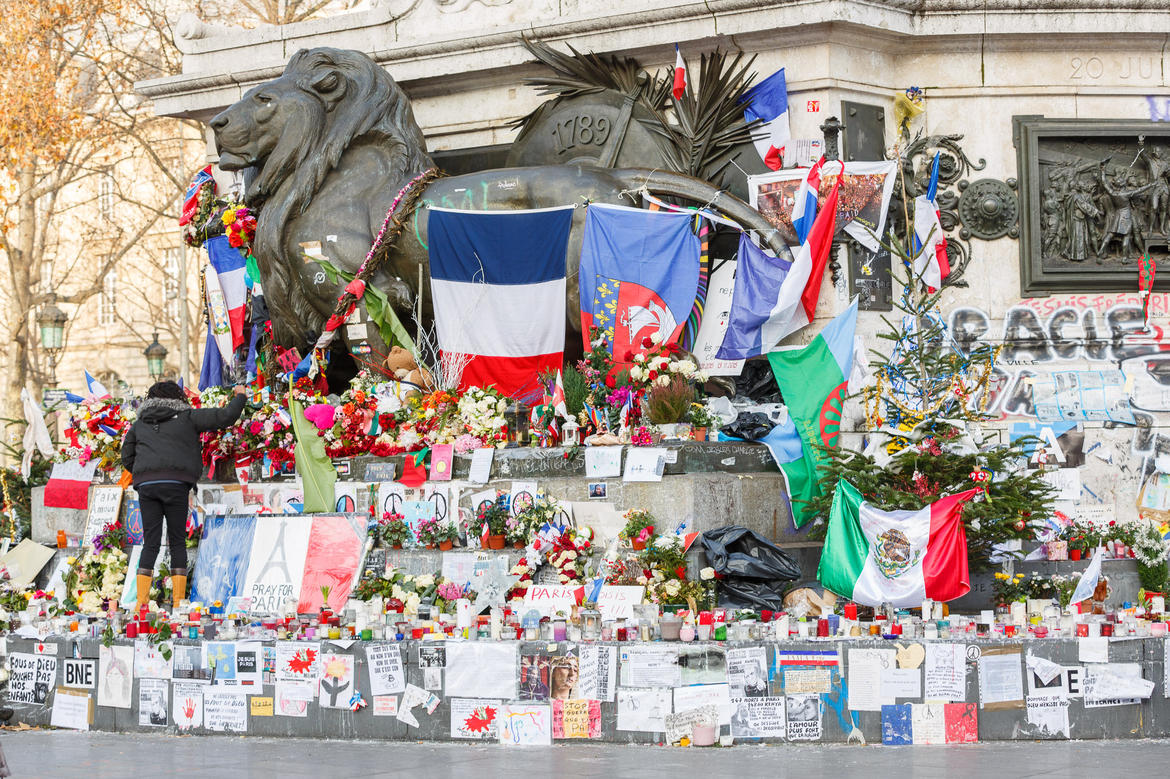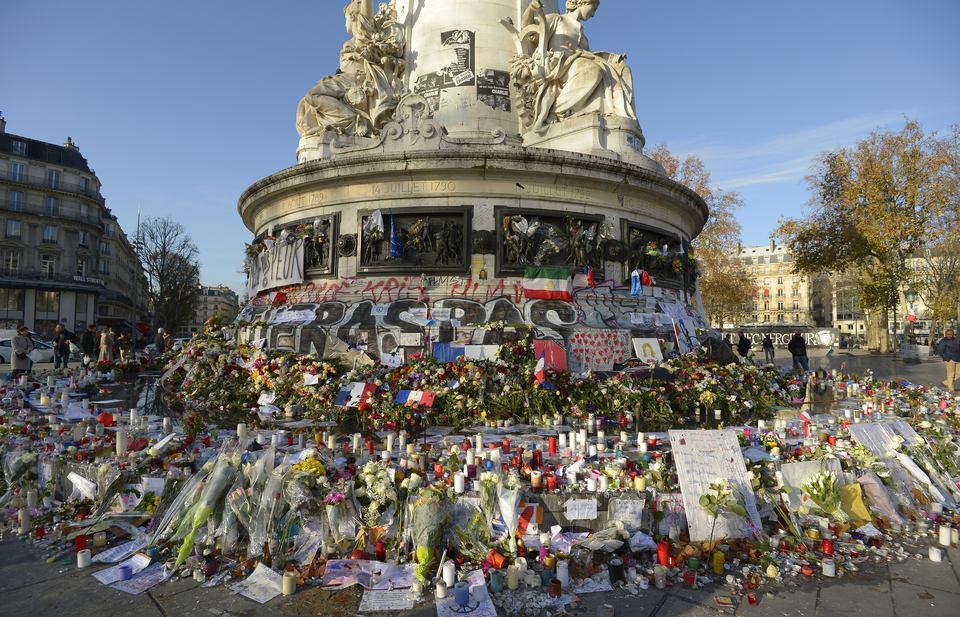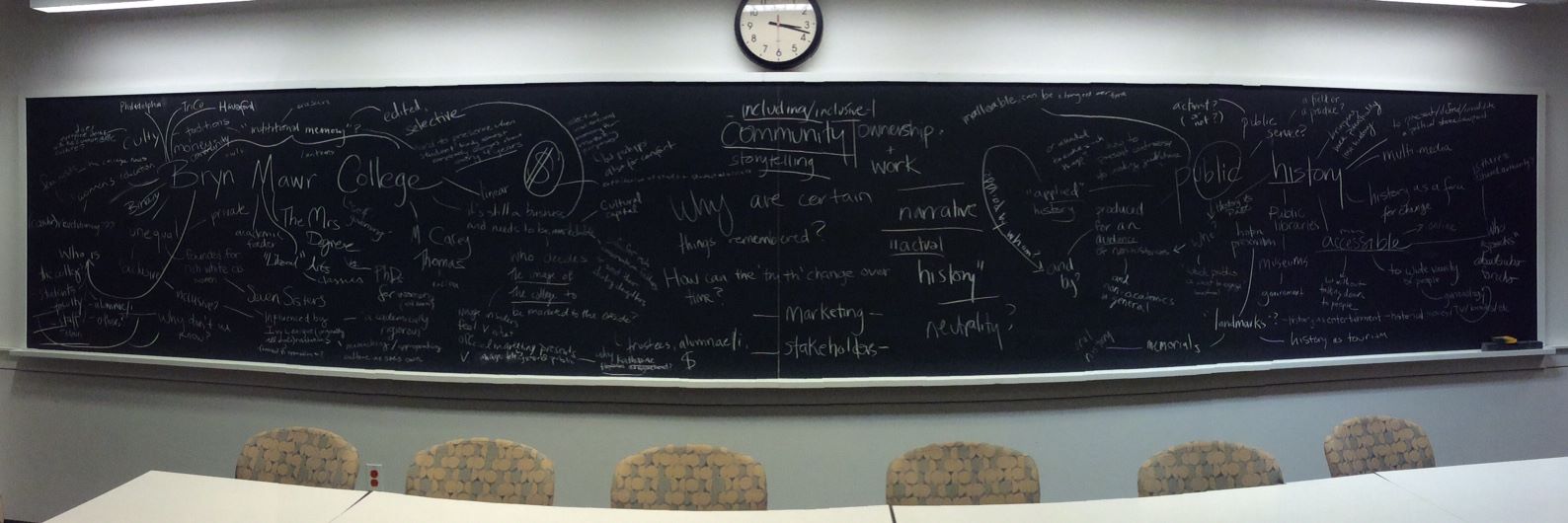Category Archives: Class Discussion
McBride Scholars: Collecting Our Stories, Filling the Gaps
For my final project I would like to propose a creation plan digital archival repository for the McBride Scholars of Bryn Mawr College’s history. I intend use a combination of class readings, academic writings about the lives of nontraditional students, and the small amount of publically available information on the McBride program. I believe that the unique dynamics of the McBride community have extensively contributed to Bryn Mawr’s history. However, in my preliminary research I have found very little information available. I will draw connections between this void and the spaces public historians have problematized during this semester. With this proposal, I believe that this is an archival silence that can be solved.
This project was primarily inspired by our work on the Summer School for Workers and the digital exhibits “The Summer School for Women Workers: Diversity, Class and Education” and “BRYN MAWR COLLEGE: A WORK IN PROGRESS”. These exhibits both explore the lives of marginalized students who were also “non-traditional”. Both of these exhibits do not mention the McBride Program, I want to explore why that is a recurring narrative in Bryn Mawr’s public history. I believe that the reasons for the founding of the Summer School resonate with the McBride program’s current cohort. The reasons for the founding of the McBride program are unclear and I think that defining this is essential to contextualizing Bryn Mawr’s history and public narrative.
I intend to answer many of the questions that have been plaguing me since I first discovered the invisibility of McBrides in our shared public history at BMC. I want to explore why we don’t appear in any of the archival or special collections repositories available online. I would like to create a more concrete timeline of the McBride’s history. I would like to outline a plan for collecting oral histories to learn about place and body memory experiences McBrides have had on campus. I will use digital tools such as the wayback machine archive to determine what organizational documents and publications are in need of collection. I will also propose the collection of photographs and physical objects (like May Day gifts). The program has undergone many changes over it’s 30 year history but there has been a constant theme of resilience that is important to make a part of the public conversation.
Wilson, Emotions, & History
I know this is blog is later than necessary but before we met I wanted to get some thoughts out. At first I thought this weeks readings were disconnected and struggled to draw clear conclusions between them. I spent a few days thinking about Fred Wilson’s exhibit and was hit with an answer finally when scrolling through my facebook feed I saw this:
The caption reads “No this is not a rock concert, this is a Bernie Sander’s rally in New York & no media coverage”.
This is not New York, this is Paris. More specifically this is Place de la Republique on the day two million people gathered together after the Charlie Hebdo attacks. Place de la Republique is also where the November attacks took place and the central statue in upper left corner of the picture has functioned for over a year as a memorial to the victims of these attacks. Just past the statue is my partner’s apartment where he (and I on FT) listened to the sounds of terror that November night. When I last visited Paris a few weeks ago, I saw the physical transformation of the square from a place of community into a quiet place of shared grief. How does this relate to archives & public history? I’m getting there, bear with me.
Around the monument were tons of pictures, cards, drawings, poems, and biographies of the victims. The sight was so harrowing for me that I couldn’t speak let alone take a picture. The stories of the Parisians whos grief I share and who could have been my love were overwhelming and I felt them. While laying my rose at her feet, I asked my partner what was to become of all of these things, who does this memorial belong to? Without blinking he said “to the Paris archives of course”. And with that, my fears were calmed and my raw emotion was transformed into a history that I felt was going to be kept safe.
So back to Bernie (or really his supporters)… when I saw this picture I was struck with pain and anger. How dare someone take an image of shared grief and appropriate it to fit a narrative of cultural & societal erasure? I was so hurt and so was Salman. He was shaking his head and I was trying to reason with the uncontrollable hurt but I when I closed my eyes all I could see was Wilson’s whipping post and chairs. I immediately realized that what hurt so much was that I had transformed my own personal pain into a manageable burn by thinking of it as a shared, safely kept history. I soon realized that all the readings this week have to do with emotion. The emotion that Wilson felt curating, the emotions he aimed to illicit by illuminating pain that was never safely kept or allowed to be shared, even the emotional connection that Thigpen created with Mary by guarding her personal history and telling her story.
Though I still dont have concrete ideas about what academic conclusions I can draw from the readings, I am certainly happy I was able to contextualize the pain from that meme and realize how minimal my experience of erasure was in comparison to the thousands of years other’s have had to endure in silence.
The Vault and UVA
“Sure, I try as hard as I can to write about the way each document fits into its period of origin, but the Internet is a relentless decontextualizer.” –Rebecca Onion
I really enjoyed the diversity of readings this week but was particularly connected to Rebecca Onion’s piece and the Take Back The Archives project. Rebecca Onion was able to explain the icky feeling I find myself having when I see de-contextualized memes about “history” on social media. Her work with the Vault reminds me of “Stuff You Missed In History Class” podcast by Tracy Wilson and Holly Frey. I listen to this podcast weekly and both of the producers do a great job of fully contextualizing the tiny glimpses of history that are not in the common narrative. But Onion to me has a much harder job with her online Vault, she has to figure out how to deal with comments, both trolls and genuinely interested readers. I think her reordering of the vault represents another example of how hard it is to plan for public history. Public history is built to be more interactive and reactive to public discourse. I thought that the quote below was really impressive:
“Maybe I’m wrong about this! Let me know. Likewise, if you know of documents from other countries, or from ancient or contemporary history, that you think would work in this space, don’t hesitate to reach out.“
One criticism/question I had was about the actual text of the individual blog posts. I appreciate her dedication to contextualization but wonder why there is no commentary on the clear difficulty and controversy of the contents of this particular piece. Maybe I am being too hard on her? Is this because Onion feels that her only role is to present the document and leaves the problematizing to the reader? She recognizes the serious nature of the post and claims herself to be an expert on African American history. I feel like this could be an opportunity to delve deeper into the content of the advice and position the suggestions as something to be problematized.
I may be the only person who noticed this but I was also surprised her blog content appears before the picture. She makes it very clear that she doesn’t want things to be presented out of context but this positioning makes it seem like her writing is the primary part of this project. Is it?
* * *
In regards to the Take Back the Archive project. I don’t know if it is just my computer but I can’t find any of the actual archives online. I clicked “The Archive” and tried to open it in a new tab but was unsuccessful. If this is not just me, I hope our guest speaker can show or tell us more about the actual content of the project. As a survivor of on campus sexual assault myself the Rolling Stone article and it’s aftermath was very personal to me. When the controversy arose and the story was put into question I was heartbroken. Initially reading the article I hadn’t found myself questioning her story. I was sad about the circumstances but never surprised about the behavior of men at UVA. It was almost identical to things I have seen in real life at Temple and Villanova and these on campus dynamics were part of the reason I chose to go back to a women’s college to complete my degree. I am really looking forward to hearing Purdom Linblad expand on the experience and process undertaken to complete this very important project.
When looking for the content of the archive I stumbled upon the Scholars Lab host site. It called into question for me how likely it is that this project can be duplicated on other campuses. Bottom line, UVA has a lot of money dedicated to this kind of project. Scholars Lab has been around since 2008. They have a larger commitment to digital access being a central element to education. I wonder how much of a factor this was in the initiation of Take Back The Archive. I hope we can learn more from both Rebecca and Purdom and I am really excited to hear more about their unique projects and style of archiving.
Regarding Quita Woodward
A memorial gift was offered that was of special significance. Quita Woodward, of the class of 1932, was a student beloved by all, gay, friendly, intrepid in the face of advancing ill health, bound to graduate at Bryn Mawr, bound also to let nothing darken her happiness there. Her death, in the year after her graduation, inexorable as merciless ill-ness had made it, was a desperate blow to all of the many who had known her and been so deeply attached to her. As Bryn Mawr lives, so her memory is to live, in the wing and the reading room which carry her name. It is, somehow, a memory that has preserved the impression of the beauty and happiness of her short life, not the unreconciled sorrow that goes with untimely death. Her father and mother subscribed to the new Library wing, particularly for the housing of the departments of Art and Archaeology, and for the specially designated reading room for the students to be called the Quita Woodward Room.
— From What Makes a College: A History of Bryn Mawr (p. 165-66)
Everything Old is…Blue Again?
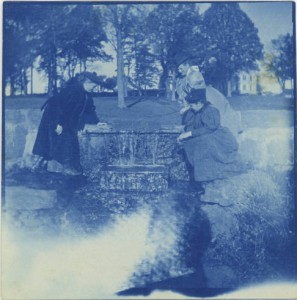
Bryn Mawr Students from the Class of 1898, via Bryn Mawr College Archives.
Given our questions raised last Tuesday about cyanotypes, the photographic printing process that produces a blue print, I thought some of you might like to see this piece from Friday’s New York Times: “Photography’s Blue Period is Making a Comeback.”
The article promotes a new exhibition at the Worcester (MA) Museum of Art on view through April, “Cyanotypes: Photography’s Blue Period.”
“Is History Written About Men, By Men?”
Are you reading this blog post? Great! Remember that your first contribution to the blog is due Sunday night, before our February 2 class. Looking forward to more posts and comments! –MM
* * *
During class today, writer Janice Nimura mentioned two recent posts on Slate and Bustle about popular history books, and to read more, here are the links:
- Andrew Kahn and Rebecca Onion**, for Slate: “Is History Written About Men, by Men?” (January 6, 2016)
- Kristian Wilson, for Bustle: “25 History Books Written By Women” (January 20, 2016)
** On Twitter, Rebecca Onion, who is the History writer for Slate, runs Slate Vault, and is an American Studies Ph.D., is doing great things under the wide umbrella of history in public: check out her feed @RebeccaOnion. If you think you’d like to talk to her at some point in class, let me know, and we’ll invite her!




